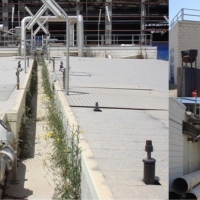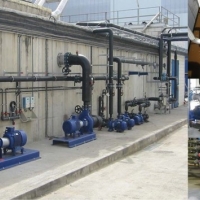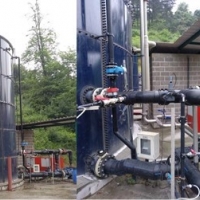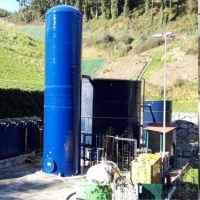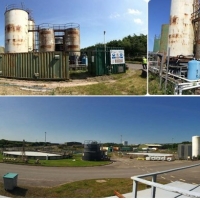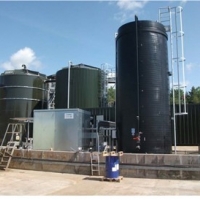Conversion of an SBR into an MBR
In some cases, the installed SBR process does not suffice to achieve the required treatment objectives. There is a variety of possible reasons: changes in the characteristics of the actual wastewater compared to the ones considered in the design (concentrations, flow rate), modification of the discharge requirements, incorrect process design, etc.
In this case, a technological alternative for improvement is the upgrade of an SBR to an MBR, which allows to reuse most of the existing plant while achieving the discharge requirements reliably, quickly and economically.
The technical study of the requirements for the conversion of an SBR into an MBR is specific and individual for each specific plant, yet there is a series of general common criteria to be taken into account:
Analysis of actual conditions:
The client must provide detailed information about the actual situation of the plant:
- Detailed characteristics of the existing wastewater, present and/or future discharge requirements, specific project limitations (space, heights, location, noise, future change of regulations, other technical considerations)
- Detailed data of the current SBR plant (engineering, design, equipment dimensioning, operating data)
- Reasons why the client thinks that the SBR does not meet the expectations and requirements (insufficient treatment capacity, non-compliance with discharge limit values, non-compliance with other specific regulations, operating problems and difficulties, high costs, etc.)
Analysis of the reasons for non-compliance:
With all data collected, a detailed and justified study must be carried out on the specific technical reasons for the inadequate functioning of the SBR, among which are typically the incorrect design or dimensioning of different units of the system (biological volume, aeration, cooling, nutrients, programming, …), the systematic failure to comply with the discharge requirements or operating problems (bulking, foaming, etc.).
One of the essential actions to convert an SBR into an MBR is the installation of an ultrafiltration unit with external membranes for the separation of activated sludge connected to the existing biological SBR reactor, which will be basically operated continuously as aerated nitrification reactor for the elimination of COD. Moreover, the adaption of the rest of the equipment (aeration, cooling, anoxia zones, reagent dosing, post-treatment steps, etc.) to the new process must be analyzed and the operation system must be updated with a new PLC/SCADA program.
The external membrane ultrafiltration systems are very compact and usually delivered “fit for purpose” pre-installed on racks or in standard sea freight containers. For this reason, the conversion of an SBR into an MBR is usually a quick and simple project with minimal interface to the existing SBR system.
An external ultrafiltration unit requires very little space. Depending on the application, it is possible to install a complete ultrafiltration system with hydraulic capacity of up to 500 m3/d in a commercial 40’ container (length 12 m, width 2.5 m).
Study of alternatives and suggestions for improvement:
Based on the previous analysis, the interventions required for the conversion of an SBR into an MBR reusing most of the existing SBR plant are presented.
CONCLUSIONS
The conversion of an SBR into an MBR is a sustainable technical alternative with the following advantages and improvements compared to the existing SBR:
- Reuse of most of the existing SBR system
- Increase of the COD and nitrogen load to be treated by up to 5 times without having to increase the biological volume
- High effluent quality (free of suspended solids, low COD load, ammonium practically zero) to comply with very strict discharge limits and possibility of water reuse
- Direct, economic and efficient combination with post-treatment steps
- Very compact solutions with very small footprints
- Simple and quick installation with minimal interface between the SBR and the new units
- Economic solution with improved treatment capacity and discharge quality at low investment costs
Examples for the conversion of an SBR into an MBR
Before – CTR ECOPARC, Barcelona, Spain
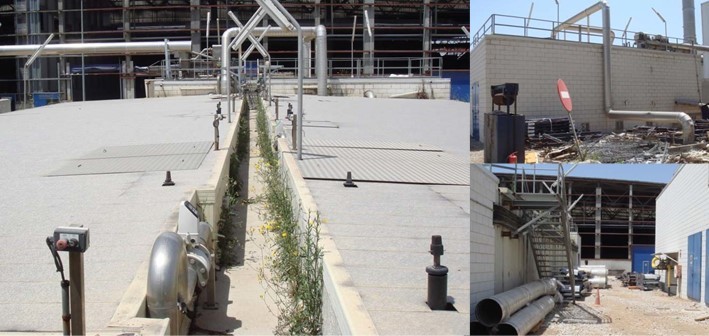
After – CTR ECOPARC, Barcelona, Spain
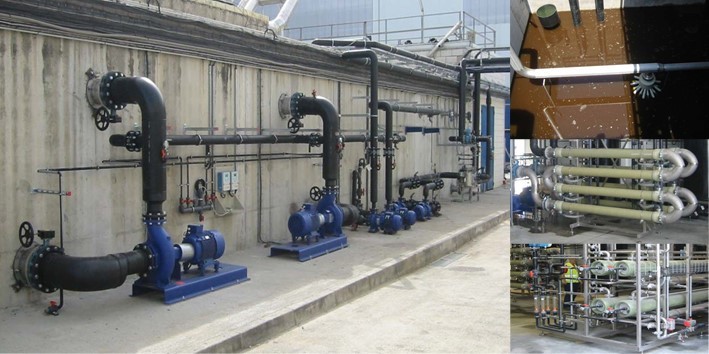
Comparison table
| SBR | MBR + RO | |
|
Flow rate [m3/d] |
150 | 300 |
|
COD load [Kg COD/d] |
2,400 | 4,800 |
|
Nitrogen load [Kg N/d] |
420 | 840 |
|
Volumetric load [Kg COD/m3.d] |
1.2 | 2.4 |
|
Discharge |
indirect | direct |
Before - LILLYHALL Landfill, United Kingdom
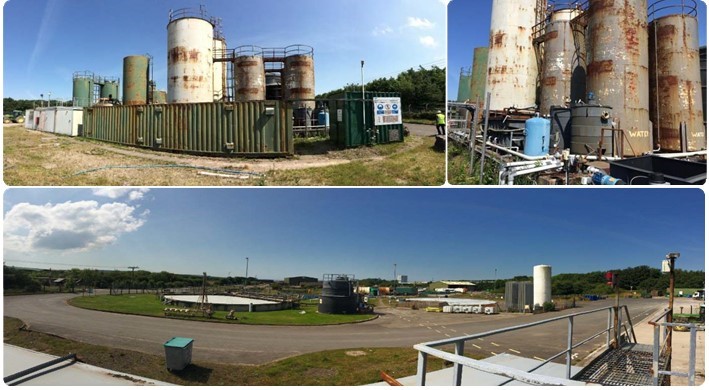
After - LILLYHALL Landfill, United Kingdom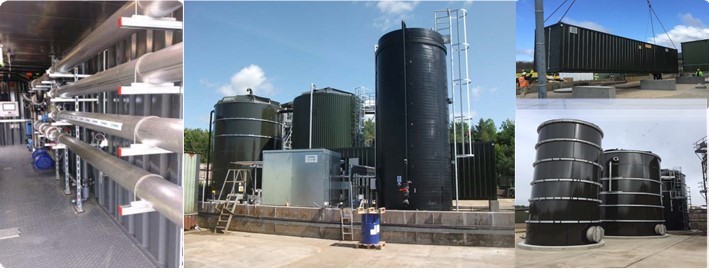
Comparison table
| SBR | MBR | |
|
Flow rate [m3/d] |
100 | 100 |
|
Footprint [m2] |
1,500 | 900 |
|
Volumetric load [Kg COD/m3.d] |
0.14 | 1.4 |
|
OPEX |
> 10 £/m3 |
< 2,5 £/m3 |
Before - IGORRE Landfill, Vizcaya, Spain
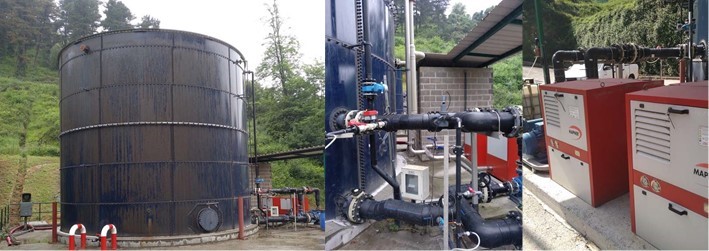
After - IGORRE Landfill, Vizcaya, Spain
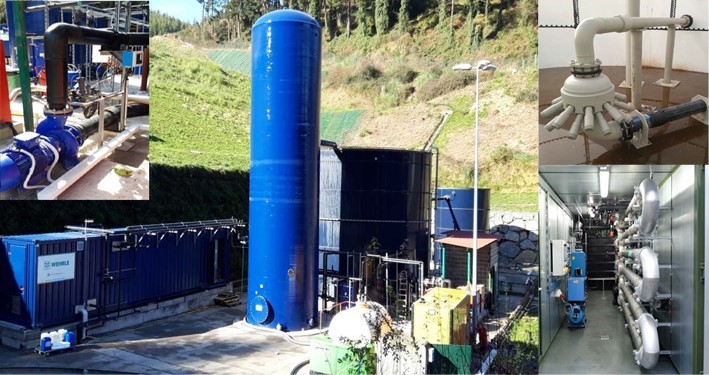
Comparison table

| SBR | MBR | |
|
Flow rate [m3/d] |
100 | 300 |
|
COD load [Kg COD/d] |
200 | 1,500 |
|
Nitrogen load [Kg N/d] |
90 | 165 |
|
Volumetric load [Kg COD/m3.d] |
0.55 | 3.35 |

